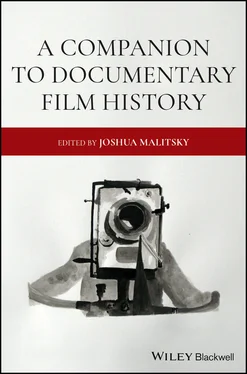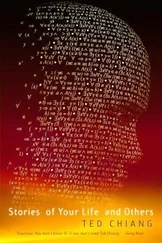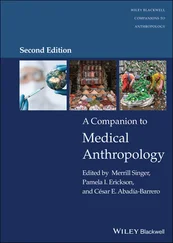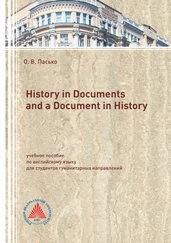This significant distinction between actuality and reality was not visible at all to most Japanese readers of Rotha's book, because in Japanese these two terms are usually translated into the same single word genjitsu (Atsugi followed this convention in her translation). However, Tsumura not only detected the distinction by reading the English original but went on to explain the substantial difference between these two domains by referring to their German equivalents, Wirklichkeit and Realität , respectively. According to Tsumura, actuality/ Wirklichkeit emphasizes its immediate and external presence ( genzon ), a world characterized by force and motion, whereas reality/ Realität designates an objective being ( kyakkanteki sonzai ) that will never be affected by anything but its essential determinants. In other words, the difference between actuality and reality can be understood by their opposing modalities, which Tsumura categorizes as “existence” ( sonzai ) and “truth/essence” ( shinri ) (Tsumura 1940: 144–145). And if Rotha's notion of documentary aims to offer a purportedly scientific analysis of the mechanism of actuality with its application of the dialectical method, he continues, fiction film has a no less important role in its exploration of the secrets of reality through what the Germans calls Dichter or Dichtung , or “the most important human intuitions and sensibilities that make art possible” (Tsumura 1940: 133). Moreover, Tsumura anticipates that the future direction of kiroku eiga – again, it should be stressed that Tsumura uses this term to indicate nonfictional film in general and not Rotha's particular use of the term documentary – must involve “the producer's effort to artistically express the purely humanistic emotions he receives from the actual world [ genjitsu sekai ] with his camera and editing skills” (Tsumura 1940: 149).
As Yuriko Furuhata rightly points out, Tsumura's philosophical interpretation of the difference between actuality/ Wirklichkeit and reality/ Realität might be somewhat too inventive, since Rotha himself seemed to pay no special attention to it in his own text and uses these two terms almost interchangeably (Furuhata 2013: 62–63). Yet it still deserves some consideration for the following reasons. First, reflecting his Romanticist background, Tsumura gives higher priority to reality than to actuality and privileges the human artist's intuitionist quest for truth. In regard to this, we should acknowledge that in his postwar writings Hanada criticized Tsumura precisely for the latter's underestimation of actuality as a secondary category by quoting Hegel's definitions that “actuality is the unity … of essence and existence, or of what is inner and what is outer” and “what is rational is actual and what is actual is rational” (Hanada 1977 [1954a]: 244). 6 Hegel continued to argue that the idea, contrary to its common understanding, “is at once what is quite simply effective and actual as well” and sarcastically adds that only “practical men,” or those “who are devoid of thoughts,” treat actuality as mere “synonymous with external, sensible existence” (Hegel 1991 [1830]: 213–214). As we will see later, Hanada, following Hegel's warning, developed his documentary theory around the question of how to approach the unknowability of reality by scrutinizing the contingent existence of actuality as such.
Second, the distinction between actuality and reality – or rather between the actual and the real – itself constituted a central focal point in Grierson's (and not Rotha's) theorization of documentary. Indeed, in one of the untitled lectures he gave sometime between 1927 and 1933, Grierson offered the following remarks that seemed to foreshadow Tsumura's argument:
When documentary people like myself talk about the superiority of the world outside the studios and tell you how much more genuine our world is than the other worlds, it is wise to remember the philosophic meaning of reality. In documentary we deal with the actual and in one sense with the real. But the really real, if I may use that phrase, is something deeper than that. The only reality which counts in the end is the interpretation which is profound … So when we come to documentary we come to the actual world … but I charge to remember that the task of reality before you is not one of reproduction but of interpretation.
(Grierson 1998: 76–77)
This statement clearly tells us that both Grierson and Tsumura were working within the same intellectual tradition, even as they differed in some respects. Where Tsumura gave a somewhat esoteric account of the filmmaker's intuitionistic revelation of the secrets of the human world through fiction films, Grierson presented his motto of the “creative treatment of actuality” as the first and foremost step to get closer to what he called “the really real.” Despite their opposing attitudes toward the concept of documentary, both Tsumura and Grierson had much in common in their idealist search for the hidden and universal truth of reality/ Realität .
Nevertheless, at the time of his commentary on Rotha's text, Tsumura was completely unaware of this unexpected affinity with Grierson, and Rotha, at least in his chapters in Documentary Film , seemed to pay no critical attention to Grierson's philosophical argument about the real and the actual. Consequently, what Tsumura found in Rotha was not an intellectual bedfellow, but a “clichéd and dogmatic materialist” who shamelessly invaded the well‐maintained territory of art and fiction films (Tsumura 1940: 132). “But in the world of art,” Tsumura contends, “there is nothing more dangerous than seeing the world by applying an ideology called ‘materialist dialectic’ [ yuibutsu benshōhō ] … Needless to say, I do not trust the success of the application of such a man‐made calculator in the world of art, so I can never agree with Mr. Rotha” (Tsumura 1940: 143). Seen from Tsumura's blatantly anti‐Marxist perspective, Rotha's term dramatization means a shallow interpretation of actuality through its economic basis alone, and for that reason, Tsumura refuses to see any positive value in Rotha's documentary theory by concluding that “the world of documentary is nothing but the materialist world that has nothing to do with the human spirit” (emphasis in the original) (Tsumura 1940: 133). As his final words, Tsumura warns the reader that he is not totally dismissive of the potential of nonfiction films in general, but never forgets to stress that its healthy development must lie in the producer's proper understanding of its stylistic, thematic, and ontological difference from fiction film (Tsumura 1940: 149).
Cinema of Facts: Imamura Taihei
It should be remembered that Tsumura published his counterargument when Rotha's prestige in wartime Japan was at its zenith; it thus provoked significant criticism from his fellow critics. This criticism, however uncompromising, focused mostly on Tsumura's misunderstanding – or rather, intentional dismissal – of Rotha's basic terms and political standpoint, therefore leaving behind his philosophical questioning of the categorical difference between reality/ Realität and actuality/ Wirklichkeit (Takakiba 1940: 525–528). This theoretically unfruitful situation did not change much until after World War II, as was also the case for the Marxist film critic Imamura Taihei, who commented only sporadically on Rotha before 1945. During the war, Imamura had already earned a reputation as “the best film scholar of our time who has most beautifully proved the theoretical character [ rironteki seikaku ] that we could ascribe to the Japanese” (Ōkuma 1938: 411) for his very prolific and systematic writings on cinema. Indeed, Imamura published 10 monographs between 1938 and 1943, including The Form of Film Art ( Eiga geijutsu no keishiki ) (Imamura 1938), Theory of Documentary Film ( Kiroku eigaron , 1940), and Theory of Animated Film ( Manga eigaron ) (Imamura 1941), to name but a few. Today, Imamura is recognized as the founder of Japanese animation theory (Lamarre 2014), but the focus of his theoretical writings always revolved around the camera's ability to offer an immediate and objective “document” of events or phenomena that took place before its lens, or around what Michael Renov has once called “a direct, ontological claim to the ‘real.’ ” (Renov 1986: 71). It thus seems natural that Imamura, unlike Tsumura, found common ground with Rotha – there is a portrait of him reading Documentary Film (see Figure 3.1) – and detailed his favorable interpretation of the book in the last chapter of his 1952 Introduction to Film Theory .
Читать дальше












